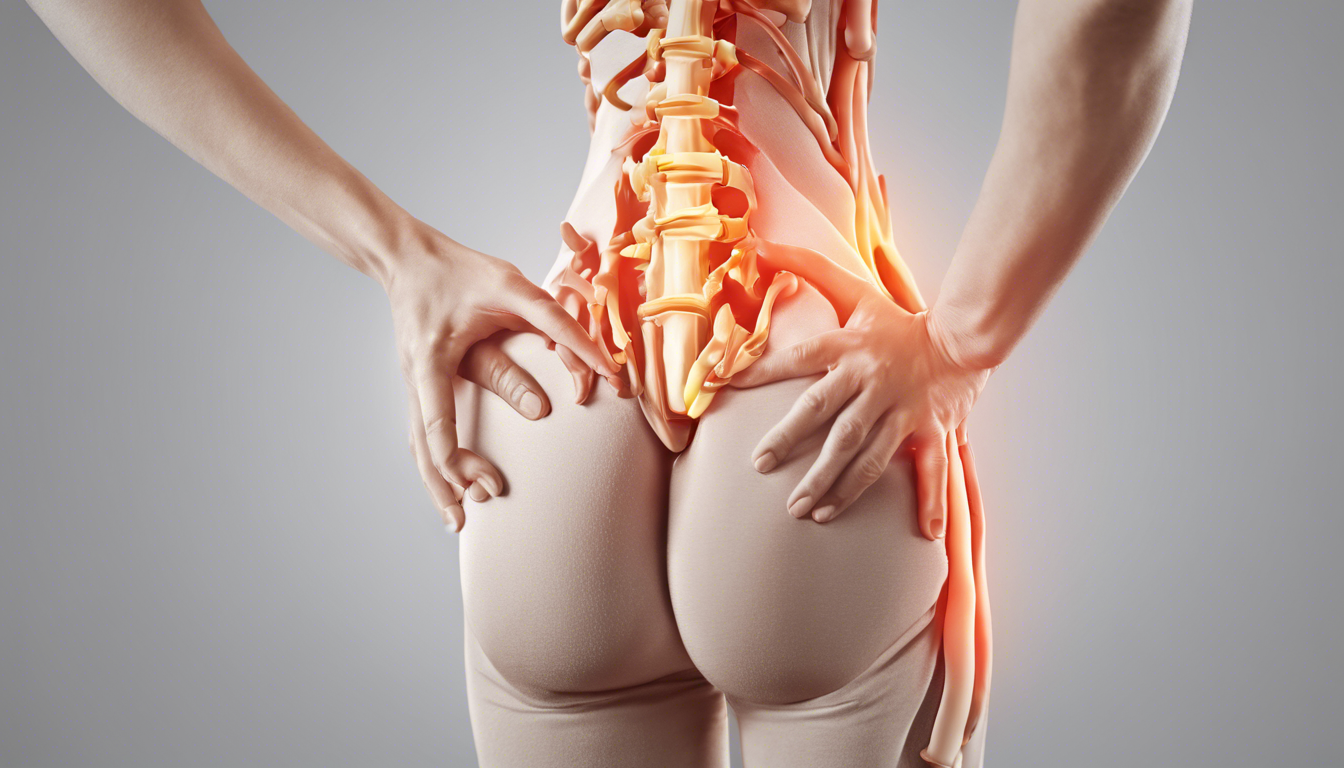Sciatica is a condition that can dramatically impact your quality of life, often causing discomfort and distress.
Understanding sciatica pain symptoms is crucial for early recognition and effective management of the condition.
Whether you are experiencing mild discomfort or sharp, shooting pain, knowing the key signs of sciatica can help you seek timely intervention and prevent further complications.
In this article, we will explore what sciatica is, the common symptoms associated with it, when to seek medical attention, and treatment options available.
We will also provide tips on how to prevent sciatica from occurring in the future.
Your Sciatica Pain-Free Future Starts Here – Click to Learn More!
Key Takeaways
- Sciatica is defined as pain that radiates along the sciatic nerve, often affecting one side of the body.
- Common symptoms of sciatica include sharp pain, tingling, and weakness in the affected leg.
- Severe symptoms of sciatica may include loss of bowel or bladder control and significant weakness in the leg.
- Seeking medical attention is critical if sciatica symptoms worsen or if there are new, alarming changes in symptoms.
- Preventive measures, such as regular exercise and proper ergonomics, can help reduce the risk of developing sciatica.
What is Sciatica?
Sciatica is a common condition that affects many people, characterized by pain that radiates along the path of the sciatic nerve, which runs from the lower back through the hips and buttocks and down each leg.
Understanding the sciatica pain symptoms is crucial for early identification and management of the condition.
Typical symptoms include sharp pain that can feel like a jolt or electric shock, along with sensations of numbness, tingling, or weakness in the affected leg or foot.
These symptoms often worsen after prolonged sitting or standing and can sometimes be accompanied by back pain.
If you recognize these sciatica pain symptoms, it’s important to consult a healthcare professional for an accurate diagnosis and treatment plan.
Common Symptoms of Sciatica Pain
Sciatica pain symptoms can vary widely among individuals, but some common indicators often include sharp or shooting pain that travels down the leg, typically originating from the lower back or buttock.
Many people describe this pain as a burning or electrical sensation that makes it uncomfortable to sit or stand for extended periods.
Other notable symptoms may include tingling or numbness in the leg, weakness in the affected area, and difficulty in moving one leg or foot.
Additionally, some individuals may experience pain that worsens when coughing, sneezing, or laughing, and may find relief when standing or walking.
Recognizing these sciatica pain symptoms early on is crucial for seeking appropriate treatment and preventing further complications.
‘The body heals with play, the mind heals with laughter, and the spirit heals with joy.’ – Proverb
Identifying Severe Sciatica Symptoms
Sciatica pain symptoms can vary widely, but recognizing the severe ones is crucial for effective treatment.
Typically, sciatica shoots pain down the back of your leg and may arise from issues in the lower back, such as herniated discs or spinal stenosis.
Severe symptoms may include intense pain that inhibits your ability to move or sit comfortably, numbness or weakness in the affected leg, and pain that spreads beyond the lower back to the foot.
If you experience a sudden onset of these symptoms, particularly alongside bladder or bowel control issues, it’s vital to seek medical help immediately.
Understanding these severe sciatica pain symptoms can help you take the necessary steps towards managing your condition effectively.
Your Sciatica Pain-Free Future Starts Here – Click to Learn More!
When to Seek Medical Attention
Sciatica pain symptoms can vary in intensity and presentation, making it essential to know when to seek medical attention.
If you experience persistent pain that radiates from your lower back down into your leg, or if you find that your symptoms are worsening over time, it’s crucial to consult a healthcare professional.
Additionally, if you encounter sudden numbness, weakness, or difficulty controlling your bladder or bowels, these could be signs of a more serious condition that requires immediate medical intervention.
Early diagnosis and treatment can significantly improve the outcome, helping to prevent long-term complications associated with sciatica.
Treatment Options for Sciatica Pain
When it comes to managing sciatica pain symptoms, understanding the various treatment options available can significantly improve your quality of life.
Sciatica, characterized by pain radiating along the sciatic nerve from the lower back down to the legs, can often cause discomfort that affects daily activities.
Initially, conservative approaches are usually recommended, including physical therapy, which focuses on exercises to strengthen the back and improve flexibility.
Over-the-counter pain relievers like ibuprofen or acetaminophen can also provide temporary relief.
In some cases, healthcare providers may prescribe stronger medications or recommend steroid injections to reduce inflammation.
For those with persistent symptoms, alternative therapies such as acupuncture or chiropractic treatments may also be beneficial.
More severe cases might necessitate surgical interventions to alleviate pressure on the nerve.
Ultimately, a tailored approach that considers the individual’s specific sciatica pain symptoms and health status is the best way to achieve lasting relief.
FAQs
What is sciatica?
Sciatica is a condition characterized by pain that radiates along the path of the sciatic nerve, which extends from the lower back through the hips and buttocks and down each leg.
It typically occurs when the nerve is compressed by a herniated disk, bone spur, or narrowing of the spine.
What are common symptoms of sciatica pain?
Common symptoms of sciatica pain include sharp pain in the lower back, pain that radiates down the leg, numbness or tingling in the legs or feet, and difficulty moving the leg or foot.
The pain can vary from mild to severe and may worsen with prolonged sitting.
When should I seek medical attention for sciatica pain?
You should seek medical attention if you experience severe pain that doesn’t improve with rest, if you have sudden loss of bladder or bowel control, if you have weakness or numbness in your legs that affects your ability to walk, or if the pain follows an injury.
What treatment options are available for sciatica pain?
Treatment options for sciatica pain may include physical therapy, medications such as anti-inflammatories or muscle relaxants, corticosteroid injections, and in some cases, surgery.
Lifestyle changes and exercise may also help relieve symptoms.
What preventive measures can I take to avoid sciatica?
Preventive measures for avoiding sciatica include maintaining good posture, exercising regularly to strengthen the core and back muscles, using proper body mechanics when lifting heavy objects, and avoiding prolonged sitting or standing.






